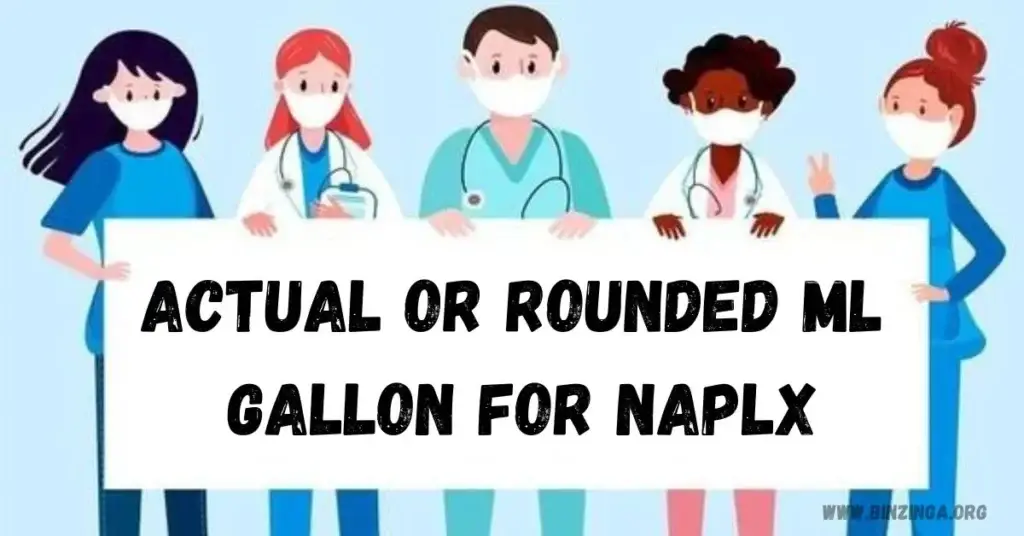When preparing for the North American Pharmacist Licensure Examination (NAPLEX), mastering various conversions, particularly the concept of the “actual or rounded ML gallon for NAPLEX,” is critical. This fundamental pharmacy calculation not only plays a role in medication preparation and dispensing but also ensures you are equipped for real-world pharmacy practice. Whether you are determining dosage conversions from milliliters (ML) to gallons or vice versa, understanding how to handle these measurements is essential for NAPLEX success. Accurate conversions can mean the difference between effective treatment and medication errors, making precision in pharmacy calculations a cornerstone of patient safety.
In this guide, we will dive deep into the concept of the actual or rounded ML gallon and its importance in both NAPLEX preparation and day-to-day pharmacy practice. We’ll cover everything from basic measurement conversions to understanding when rounding is appropriate, all while providing practical examples and tips to avoid common errors.
Table of Contents
ToggleWhy Actual or Rounded ML Gallon Matters in Pharmacy
The NAPLEX tests your knowledge in critical areas, including pharmaceutical calculations. A deep understanding of measurement conversions is vital for several reasons:
- Patient Safety: Medication dosing requires precise calculations. A slight error, such as rounding too much or too little, can significantly impact patient outcomes. This is especially true when dealing with potent medications or drugs with a narrow therapeutic index.
- Pharmacy Accuracy: As a pharmacist, you will be responsible for ensuring that all prescriptions are accurately dispensed. Understanding how to navigate actual versus rounded measurements will give you the confidence needed in both high-stress exam environments and your career.
- Preparation for NAPLEX: Questions on the NAPLEX will often require you to convert units such as milliliters (ML) to gallons. Without proper knowledge of these conversions, you may struggle with certain exam questions that could otherwise be straightforward.
Understanding the Concept: Actual vs. Rounded ML Gallon
When approaching pharmaceutical calculations, one of the primary challenges is understanding when to use actual versus rounded measurements. Both have their place, but knowing the difference is key.
- Actual Measurement: This refers to the exact amount, with no rounding involved. In many clinical situations, especially when dealing with critical care medications, accuracy down to the decimal point is necessary. For example, if a medication requires exactly 250.6 ML, providing only 250 ML could lead to underdosing, compromising treatment efficacy.
- Rounded Measurement: Rounding simplifies calculations and may be appropriate when high precision is not as critical. For example, when preparing bulk solutions or dealing with over-the-counter medications where slight variations in dosing are acceptable, rounding to the nearest whole number (e.g., rounding 250.6 ML to 251 ML) might be acceptable.
The Importance of Precision in Dosing
The difference between actual and rounded measurements can seem insignificant, but it plays a major role in patient care. The NAPLEX includes scenarios that will test your ability to choose the correct type of measurement for a given situation. Misjudging when to use a rounded value can lead to:
- Underdosing or Overdosing: An inaccurate dose could mean the difference between therapeutic effectiveness and a failure to treat the condition. In some cases, such as with chemotherapy drugs or pediatric medications, even small dosing errors can have serious consequences.
- Legal and Ethical Implications: Pharmacists are responsible for patient safety. If a medication error occurs due to improper calculation, it could lead to legal issues or jeopardize your professional license.
Mastering the actual or rounded ML gallon measurement is thus not only important for the exam but essential for protecting patient health.
Actual or Rounded ML Gallon Conversion Basics
To understand how to apply this concept effectively in NAPLEX questions, let’s review the basic conversion from milliliters (ML) to gallons.
1 gallon equals approximately 3,785 milliliters (ML). This conversion factor is crucial to understand when working with different volumes in pharmacy practice.
Here’s how you can apply this in real-world pharmacy calculations:
- Converting ML to Gallons: Divide the milliliters by 3,785 to convert the volume to gallons.
- Example: 1,000 ML ÷ 3,785 = 0.26 gallons (rounded to two decimal places)
- Converting Gallons to ML: Multiply the number of gallons by 3,785 to get the volume in milliliters.
- Example: 2 gallons × 3,785 = 7,570 ML
Practical Examples in Pharmacy
Example 1: Actual Measurement
A patient requires exactly 1,500.7 ML of a specific liquid medication. You need to administer this exact amount, as even a small variation could impact the treatment’s effectiveness. To ensure the correct dosage, you would use the actual measurement, which in this case is 1,500.7 ML. Converting this to gallons:
- 1,500.7 ÷ 3,785 = approximately 0.396 gallons
In this scenario, rounding down to 0.39 gallons would result in underdosing, potentially reducing the medication’s efficacy.
Example 2: Rounded Measurement
For a bulk preparation, you need to convert 2 gallons of a solution into milliliters. Since this is a non-critical medication, rounding the final result would be acceptable:
- 2 × 3,785 = 7,570 ML
If a slight rounding occurs during preparation, such as rounding to 7,600 ML, the outcome may still be acceptable since the margin of error is minimal in this context.
The Impact of Incorrect Rounding in Pharmacy Practice
Understanding when to use rounded measurements versus actual measurements is crucial in pharmacy practice. Incorrect rounding can lead to significant dosing errors, particularly with medications requiring exact dosing. Common scenarios include:
- Sterile Compounding: In hospital settings, pharmacists often prepare sterile compounded medications, such as intravenous (IV) fluids, where precision is critical. Rounding too much or too little in these cases can lead to serious complications for patients, such as overhydration or dehydration.
- Pediatric and Geriatric Dosing: Special populations, including children and the elderly, are particularly sensitive to dosage changes. Their body systems often cannot handle large variances in medication concentrations, making it vital to use actual measurements whenever possible.
Tools and Strategies for Mastering Actual or Rounded ML Gallon Conversions
To effectively prepare for the NAPLEX, incorporating various study techniques and resources into your routine is essential. Here are some tools and strategies to consider:
- Flashcards: Create flashcards with common conversions, such as ML to gallons and vice versa. Repeatedly testing yourself on these conversions will help solidify your knowledge.
- Practice Questions: Use online quizzes and NAPLEX prep resources that offer practice problems specifically focused on measurement conversions. The more you practice, the more confident you will become.
- Study Groups: Form a study group with fellow students or colleagues. Discussing difficult conversion problems can help clarify concepts and provide different perspectives on problem-solving.
Avoiding Common Errors with Actual or Rounded ML Gallon Calculations
During the NAPLEX exam, one of the most common mistakes students make is failing to correctly apply rounding rules or confusing actual with rounded measurements. To avoid these errors, consider the following tips:
- Double-check your work: Always review your calculations to ensure accuracy. Simple mistakes, such as misplacing a decimal point, can drastically alter your final answer.
- Understand when to round: Only round numbers when the situation permits, such as in non-critical doses. Always ask yourself whether rounding could negatively impact the patient’s health.
- Stay calm during the exam: Anxiety can cause you to rush through questions. If you feel overwhelmed, take a deep breath and methodically work through each problem, ensuring you’ve applied the correct measurement.
Conclusion
Mastering actual or rounded ML gallon for NAPLEX conversions is essential for success on the NAPLEX and in your future pharmacy career. By understanding the importance of precision, practicing conversions regularly, and knowing when to apply actual versus rounded measurements, you will perform well on the exam and ensure the safe and effective use of medications in your professional practice. Patient safety is paramount; these skills will allow you to make accurate dosing decisions that contribute to optimal healthcare outcomes.
With dedication and consistent practice, you can confidently tackle any actual or rounded ML gallon problem that the NAPLEX presents. Good luck on your journey to becoming a licensed pharmacist!
Also read more about Rounding mL in an Oz NAPLEX 30: Your Ultimate Guide to Precision in Pharmacy Calculations




